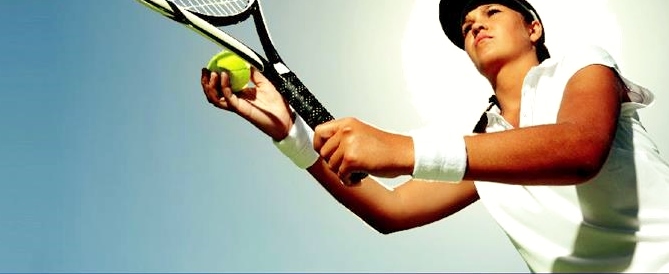Tennis is enjoyed by millions of competitive and recreational players around the world. And not unlike any other sport injuries can and do occur.
The demands on a competitive tennis player from a high number of tournaments may lead to overuse injuries, such as “tennis elbow” or stress fractures. For non-competitive tennis players, improper or inadequate physical and technique training may be the cause of overuse injuries.
What types of injuries are most common in tennis?
Two-thirds of tennis injuries are due to overuse and the other one-third is due to a traumatic injury or acute event. These overuse injuries most often affect the shoulders, wrists, and elbows. Although overuse injuries make up a large proportion of tennis injuries, the good news is that such injuries can be prevented with some changes to technique and training routines.
What are common injuries and treatments?
Tennis Elbow
The injury most heard about is “tennis elbow,” which is an overuse of the muscles that extend the wrist or bend it backwards. It is also the muscle most used when the tennis ball impacts the racquet.
Proper strengthening of this muscle and other muscles around it, along with a regular warm-up routine, will help decrease the likelihood of experiencing tennis elbow. Paying attention to technical components such as grip size and proper technique can also help prevent this condition.
Shoulder Injuries
Shoulder overuse injuries are usually due to poor conditioning and strength of the rotator cuff muscles. The rotator cuff helps to position the shoulder properly in the shoulder socket. When it is fatigued or weak, there is some increased “play” of the ball in the socket, irritating the tissues. The tendon or the bursa can become inflamed and hurt. This usually produces pain with overhead motions such as serving. If the pain persists, it can interfere with sleep and other daily activities.
Proper rotator cuff and scapular (shoulder blade) strengthening and conditioning can reduce the likelihood of sustaining a rotator cuff injury.
Stress Fractures
20% of junior players suffer stress fractures, compared to just 7.5 % of professional players. Stress fractures are the result of increasing training too rapidly. When the muscles tire, more stress is placed on the bone. If this occurs too quickly, the bone cannot adjust rapidly enough to accommodate the stress and it breaks. These “breaks” are usually cracks in the bone that cause pain rather than an actual break or displacement of the bone. Stress fractures can occur in the leg (tibia or fibula) or in the foot (the navicular or the metatarsals).
These injuries are preventable with proper strength and endurance training prior to extensive tennis playing. Appropriate footwear is also critical to preventing stress fractures.
Muscle Strains
Muscle strains usually occur from quick, sudden moves. A good warm-up can help diminish the risk muscle strains. Proper stretching should be slow and deliberate. The best stretches are moving stretches, such as swinging your leg as far forward and backward or swinging your arms in circles and across your body. Proper stretching should last at least five minutes.
What else can be done to prevent injuries?
Warm-up and stretch
A proper warm-up is essential to avoiding an injury, no matter what the sport. The warm-up should include a slow jog, jumping jacks, or riding a bike at low intensity. A warm-up will also improve the effectiveness of training and improve athletic performance.
Cool-down and stretch
After a tennis session, players need to take the time to properly cool-down and stretch. This helps sustain muscles and keep them flexible, which are both important parts of avoiding injuries.
Core stability exercises
Strengthening muscles through a variety of core and flexibility exercises can help prevent many types of chronic and overuse injuries. Exercises like planks and ball stabilization can help strengthen the core.
Proper nutrition and hydration
Nutrition aids recovery from tennis by replenishing glycogen stores and by providing necessary protein. The ‘Australian Dietary Guidelines’ provide a simple, scientific, balanced and sustainable approach to adjusting your eating for optimal health and function on the court.
By far the most frequent ailment suffered by tennis players is dehydration, and for good reason. A large percentage of tennis sessions or competitions happen under the bright glare of the sun, where a lack of proper hydration can turn a healthy athlete into a floundering vegetable in a matter of minutes. This is not complicated. To combat dehydration, hydrate. It sounds easy, but it’s amazing how many tennis players, both social and competitive forget to drink enough water before and after spending time on the court.
Listen to your body
Your body will let you know if something is wrong. Pushing through an injury can often lead to a worse outcome and more time off the court. Have niggles and injuries assessed and managed by one of our physiotherapists. We can prescribe an appropriate strengthening and flexibility program including theraband exercises and weight training, and can assist training modifications to get you back onto the court quicker without aggravating any injury concerns.
For more information regarding injury prevention or to arrange an assessment aimed to correct any predisposing biomechanical risks contact one of the physiotherapists at Jubilee Sports Physiotherapy.























